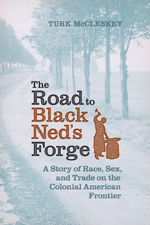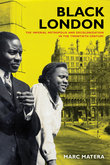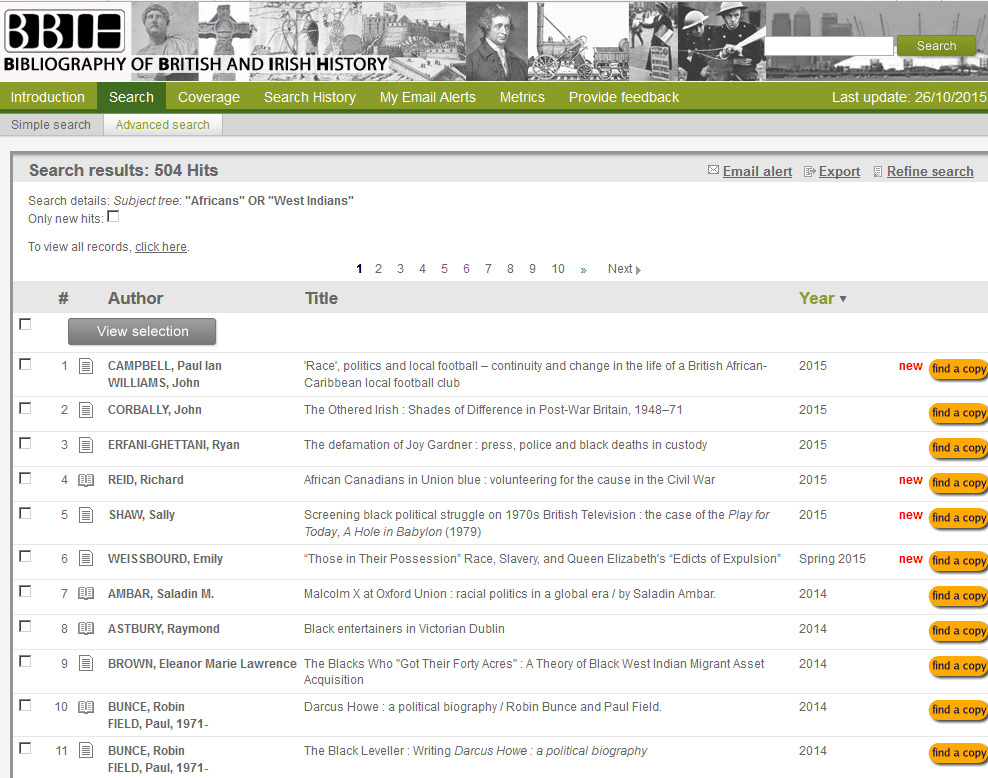I usually get my ideas for posts about BBIH and its contents from external sources and recently received two such prompts. The Guardian ran an article on the teaching of black history where the questions, Did black immigrants come through Ellis Island? Were there black cowboys? Where did the free black men in New Amsterdam live? were asked and the author felt that black history (in an American context) was confined to slavery, the American Civil War and the Civil Rights Movement. This article was followed by another, from a British perspective which argued for a different approach to black history.
Quite by chance a number of articles and books came to my attention, hopefully offering examples of these different approaches.
While not covering black cowboys, and certainly straying into slavery territory, the biography, The Road to Black Ned’s Forge: A Story of Race, Sex, and Trade on the Colonial American Frontier, introduces Ned Tarr, a blacksmith and landowner in Virginia. Tarr purchased his freedom and moved to Virginia setting up a blacksmith business and became the first black landowner west of the Blue Ridge. He married a Scottish woman, an interracial relationship that seems to have been accepted by his neighbours, and went on to found a Presbyterian congregation. However his late master’s son attempted to re-enslave him and Tarr had to defend his freedom in court.
Tracking back to Roman Britain a recent book, Objects and Identities. Roman Britain and the North-western Provinces includes the chapter “Seeing Black: Africans in Roman Britain” which looks at epigraphic and isotopic evidence of Africans in Britain as well as their depiction in objects.
On a completely different level, and surprisingly appearing in the journal Shakespeare, is the article The Resonables of Boroughside, Southwark: an Elizabethan black family near the Rose Theatre. The life of this family is traced in the archival records between 1579 and 1582 in Boroughside, Southwark and St. Olave, Tooley Street and the possible connections to Elizabethan theatre investigated.
The Resonables of Boroughside is complemented by two other articles on similar themes; Gusatve Ungere explores The presence of Africans in Elizabethan England and the performance of Titus Andronicus at Burley-on-the-Hill, 1595/96; while Emily Bartel’s Too Many Blackamoors: Deportation, Discrimination, and Elizabeth I argues that the targeted subjects were West Africans captured from Spanish New World settlements and seen primarily as “Spanish” subjects.
Moving to the middle of the eighteenth century, a shift in the artistic representation of black people became perceptible in England: a theme explored in Bridging the Gap between Self and Other? Pictorial Representation of Blacks in England. The examples used are, Thomas Gainsborough’s portrait of Ignatius Sancho (1768), Joseph Wright of Derby’s Two Girls with a Black Servant or A Conversation of Girls (1769), Sir Joshua Reynolds’s Omai (1776), and John Singleton Copley’s Watson and the Shark (1778). Gainsborough’s portrait of Ignatius Sancho shows a gentleman as well as a man of feeling, while Wright of Derby’s Two Girls with a Black Servant hints at a possible equality between the children.
While demonstrating Connected Histories to some students I happened upon the Old Bailey online entry for JOHN MARTIN “(a negro) was indicted for stealing two cloth coats…” and other clothes from “…the property of John Turnbull, in his dwelling-house, May the 18th .” [1782]
What intrigued me was his punishment – “Transported for 7 Years to the Coast of Africa, 1. John Martin”, while others, presumably white criminals, were “-Transported for 7 years to America, 6. John Burgess, Joseph Barnsley, Ann Thomas, Thomas Winton , John White , and William Bradbury”. The intrigue is that Martin was sent to Africa and the others to America, itself in the throes of the War of Independence. How I wonder did Martin fare in Africa, a continent he may never have seen, and what would his life have been if he had been sent to the American Colonies, soon to be the USA – would he have escaped and been free or enslaved?
For a detailed discussion in the Old Bailey Proceedings of black people as victims, witnesses and as the accused see “Black people and the criminal justice system: prejudice and practice in later eighteenth- and early nineteenth-century London”. The article concludes that there was no significant discrimination against black people as prosecutors and witnesses, although punishment patterns for black convicts included rather greater emphasis on transportation (as in John Martin’s case).
Taking us up to the present are a number of books and an article. “Black Migrants, White Queers and the Archive of Inclusion in Postwar London” examines the historical concurrence of West Indian migration to Britain and the increase in discourses around British homosexuality in the 1950s and 60s, using, amongst other sources, an oral history by a gay Jamaican dancer who migrated to London in 1948.
Continuing the theatrical theme is the book Black British Theatre Pioneers : Yvonne Brewster and the First Generation of Actors, Playwrights and other Practitioners, which explores the many ways in which Brewster has used black experience and culture to enrich British theatre as co-founder of Talawa, one of Britain’s black-led theatre company, as well as The Barn, Jamaica’s first professional theatre company.
Finally, Black London: The Imperial Metropolis and Decolonization in the Twentieth Century reveals the city as a key site in the development of black internationalism and anti-colonialism and shows the significant contributions of people of African descent to London’s rich social and cultural history.
As usual, all relevant material can be found in the Bibliography of British and Irish History.


